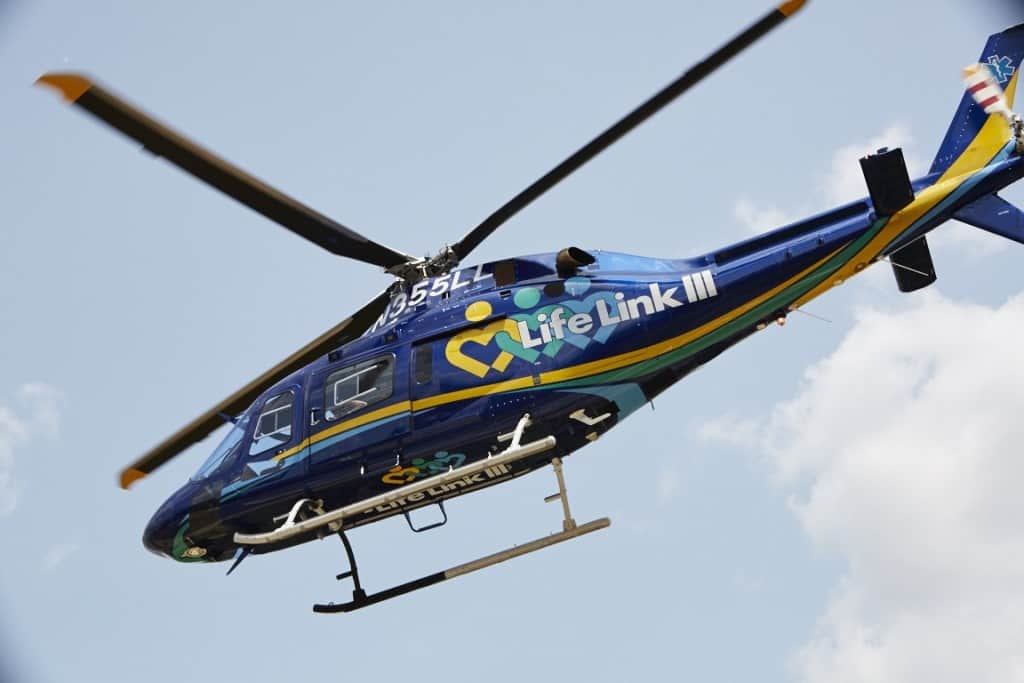
We have all heard of the “Golden Hour,” the critical hour in which to get a trauma patient to definitive care to ensure the best chance of survival. Many EMTs and EMRs do not have the luxury of having a Level 1 Trauma Center close by. One of the fastest methods to do this is by air ambulance. Did you know that you can request a helicopter based on the mechanism of injury? If a patient is hurt in a manner that is likely to cause severe or life threatening injuries, you can request a helicopter be started based on the mechanism of injury.
Here are a few examples of significant mechanism of injury that would justify an auto-launch: an un-helmeted motorcycle accident at highway speed, a passenger in a vehicle where another passenger was killed, vehicle rollover accidents, pedestrians struck by a vehicle, penetrating trauma-like stabbing or gunshot wound, amputation or crushing injury, or major burns. If it is later determined that the air ambulance is not needed, just call to cancel. Like a ground ambulance, there is no charge if the patient is not transported. If you have a helicopter respond to a scene, you will need to be sure that law enforcement, fire, EMS, or another responsible party is available to secure the landing zone and communicate with the helicopter. As always, know and follow your local protocols.
You should also consider using air medical for ALS intercepts. When there is no ALS ground intercept unit available, or the response time is too long, you can request an air medical transport intercept. The best place for an intercept is usually an airport. Small airfields are good places to arrange intercepts because both the grounds and airspace have controlled access. The pilot can assume that the landing zone at an airport is already secure. Hospital helipads are also good locations to arrange an intercept.
Here are a few reminders about requirements for a scene landing: the landing zone (LZ) should be at least 100 X 100 feet, and the area selected should be firm, level, and free of wires, trees, poles, etc. The area should also be free of ground debris and obstructions. The LZ should be at least 100 feet away from the patient and emergency personnel. Most air medical providers are glad to provide LZ training and training materials. Call your local provider and request it.
Kory Sandoz is a Communication Specialist for Life Link III® air medical transportation serving Minnesota, Western Wisconsin and eastern North Dakota. Photo courtesy of Life Link III.


